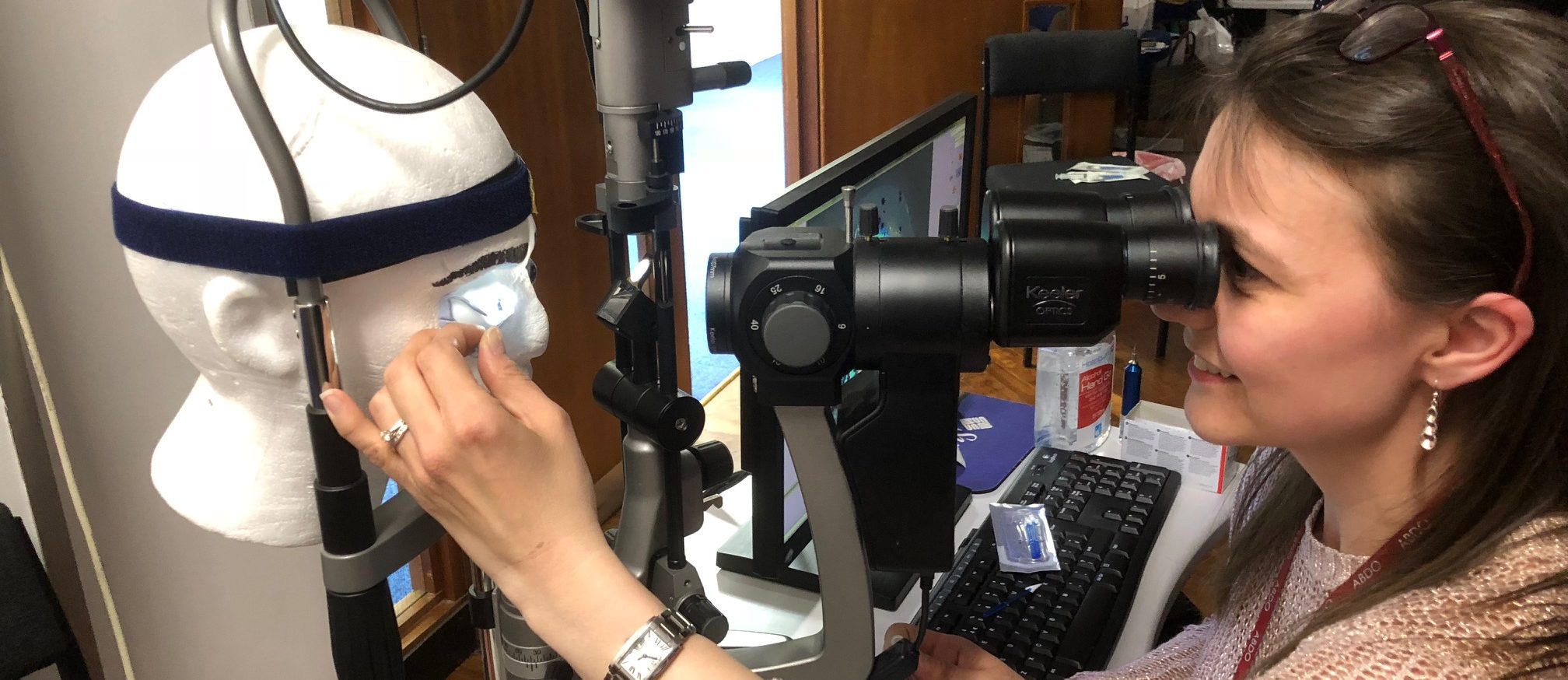
Learning outcomes
Learning outcomes & competencies for the ABDO/WOPEC Extended Services Course
The following learning outcomes are for the Extended Services Course.
CLO 1.1.2 To know what additional questions to ask a patient presenting with red eye and how to interpret the answers.
CLO 3.2.2 To develop an assessment and management plan for red eye presenting in an acute eye care scheme and in particular for those amenable to primary care practice management without the need for further referral.
DO 8.1.1 To know the commoner causes of a red eye. To understand the typical signs and symptoms associated with different causes of red eye. To understand the management options for the commoner causes of the red eye.
CLO 1.1.2 To know what additional questions to ask a patient presenting with symptoms of flashes and floaters and how to interpret the answers.
CLO 2.6.2 To understand the appropriate management plan for patients presenting with signs of PVD of retinal detachment.
DO 3.1.3 Understand the presenting signs of a PVD and retinal detachment, the location of these pathologies and the specific ocular drugs and techniques used to assess a patient.
DO 8.1.2 To understand the commoner causes of flashes and floaters. To understand the relationship between rhegmatogenous retinal detachment and posterior vitreous detachment and the causes of flashes and floaters within these contexts.
CLO 8.1.2 To understand the risk factors associated with AMD. To understand the aetiology of dry and wet AMD
CLO 2.5.3 To understand how a differential diagnosis is made with other eye conditions as well as between treatable and non-treatable AMD, as defined by the appropriate protocols.
DO 3.1.3 To know the ocular location producing the presenting signs and symptoms of dry and wet AMD and what techniques are used to assess in each case.
This lecture reviews NHS funded treatments available for AMD patients. It then goes on to outline the optometric management of AMD. This includes referral, prescribing, patient information an education and recall.
CLO 1.2.4 To be able to discuss aspects of optometric management with patients who have AMD, including spectacle prescribing, referral for rehabilitation and recall. To be aware of and be able to discuss the treatments currently available to patients with AMD.
CLO 2.5.3 To know the current referral pathways for AMD
DO 3.1.3 To understand how an optometrist would assess and make a differential diagnosis of treatable and non-treatable AMD.
CLO 2.6.1 To understand acceptable practice-based methods of removing superficial foreign bodies.
CLO 3.2.2 To know the typical signs and symptoms of a superficial foreign body. To know nine key points to help determine if a corneal lesion is infected or not. To understand the management for infected and non-infected corneal lesions.
DO 8.1.5 To understand the anatomy and defensive capabilities of the cornea. To understand the histological difference between an infected and non-infected infiltrate.
CLO 1.1.2 To know what additional questions to ask a patient presenting with a sudden loss of vision and how to interpret the answers.
DO 8.1.2 To understand the typical signs and symptoms associated with a sudden loss of vision. To know the commoner causes of sudden loss of vision.
DO 8.1.3 To understand the management options for the commoner causes of loss of vision. To understand the management plan for sudden loss of vision in an acute eye care scheme, and in particular those amenable to optometric management without the need for further referral.
CLO 3.2.4 To understand the symptoms of dry eye. To understand the presenting signs of dry eye and how to investigate the signs using specific techniques. To know and put into context the tear film and corneal anatomy and the evidence basis for tear film anatomy. To understand the causes and different subtypes of dry eye.
DO 8.1.3 To understand the therapeutic and other treatment options for a patient with dry eye. To be able to apply the knowledge learned in this module to how you would manage and treat a patient with dry eye in practice.
CLO 2.5.3 To acquire knowledge of the epidemiology and risk factors of the various types of glaucoma, particularly COAG and OHT. To understand how to formulate a risk profile based on the characteristics of the patient presenting, their history and symptoms plus any clinically significant findings on examination. To understand the difference between open and narrow anterior chamber angle, primary and secondary glaucoma and form a basic classification based on these differences.
DO 3.1.3 To remind the practitioner of the optimal way to view, assess and record the optic disc in COAG. To alert practitioners to the specific signs of glaucomatous optic disc changes.
CLO 2.5.3 To know the current NICE Guidelines for repeating IOP when refining referrals
DO 3.1.6 To remind practitioners about variations in IOP including extraneous and measurement errors which affect measurement of IOP. To be aware of the range of tonometers available and how they should be used. To understand the principles of Goldmann applanation tonometry. To be aware of factors which influence IOP readings with a Goldmann tonometer.
DO 8.1.5 To introduce the link between IOP results and glaucoma.
CLO 2.5.3 To know the current NICE Guidelines for repeating visual fields when refining referrals.
CLO 2.7.2 To be able to select most appropriate field examination for investigation of suspect COAG.
DO 3.1.5 To remind the practitioner of the underlying anatomy and physiology which dictate where and why visual field loss occurs in COAG. How an optometrist would interpret the visual field plot of a Humphrey Visual Field Analyser with particularly relevance to COAG and which type of visual field defects which are commonly seen in COAG.
CLO 2.5.3 To understand the NICE guidelines for both the diagnosis and management of OHT and COAG as well as for referral of OHT and COAG from primary care to secondary care in cases of undiagnosed but suspected OHT and COAG and diagnosed OHT.
CLO 3.2.2 To have knowledge of various techniques for evaluating a patient; Van Herick’s technique and applanation tonometry. To be able to annotate and interpret the results.
DO 3.1.3 To have knowledge of various techniques for evaluating the optic nerve head of a patient, specifically slit lamp BIO with Volk lens.
Find out more about WOPEC and LOCSU distance learning lecture series and course content here.
Find the FAQ for the extended services for contact lens opticians here.
Extended services for contact lens optician
To access the online modules, fill in the form below to request an access code. By accepting an access code you will allow your details to be shared between ABDO and WOPEC
